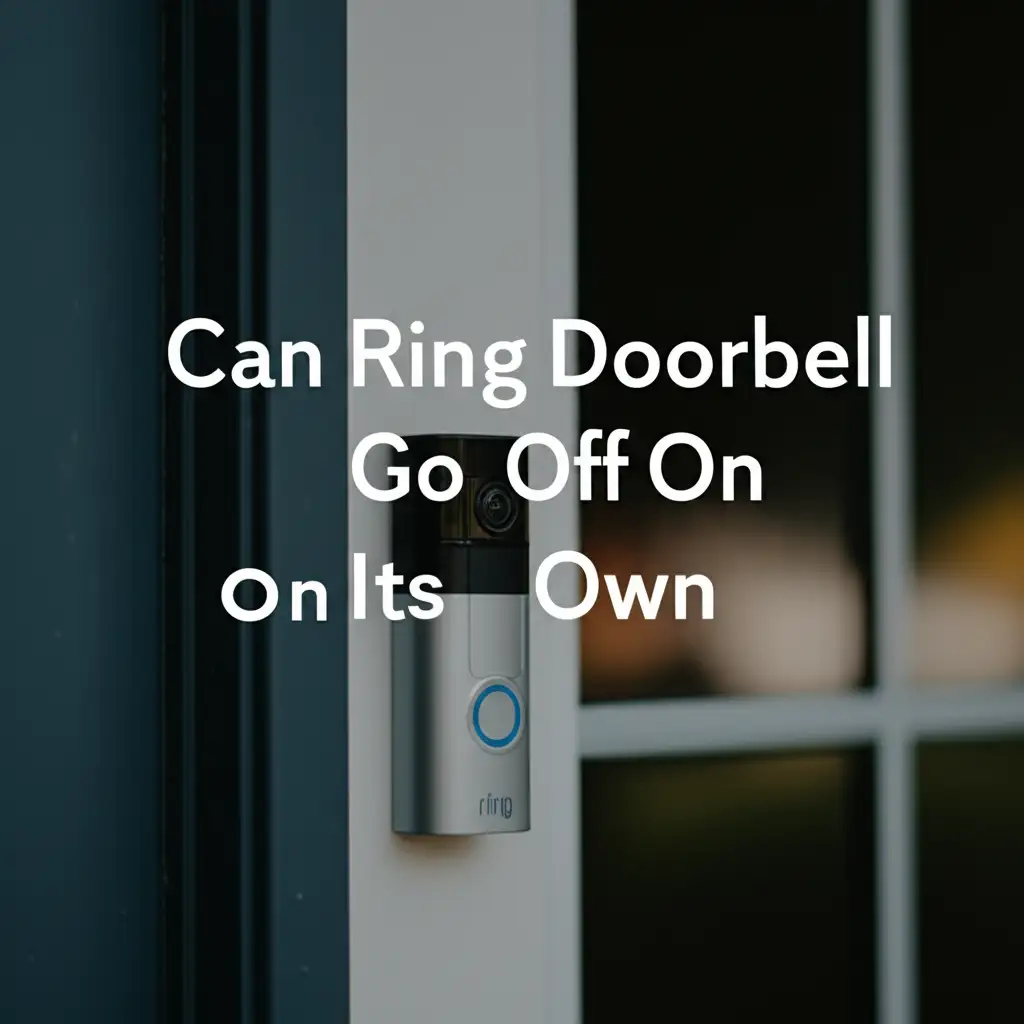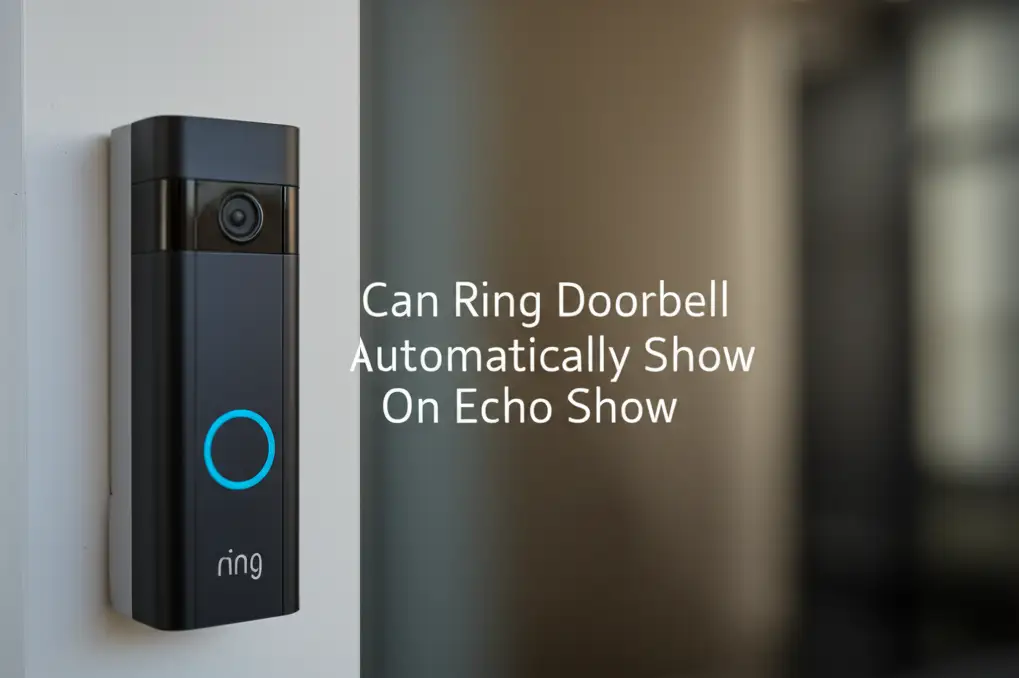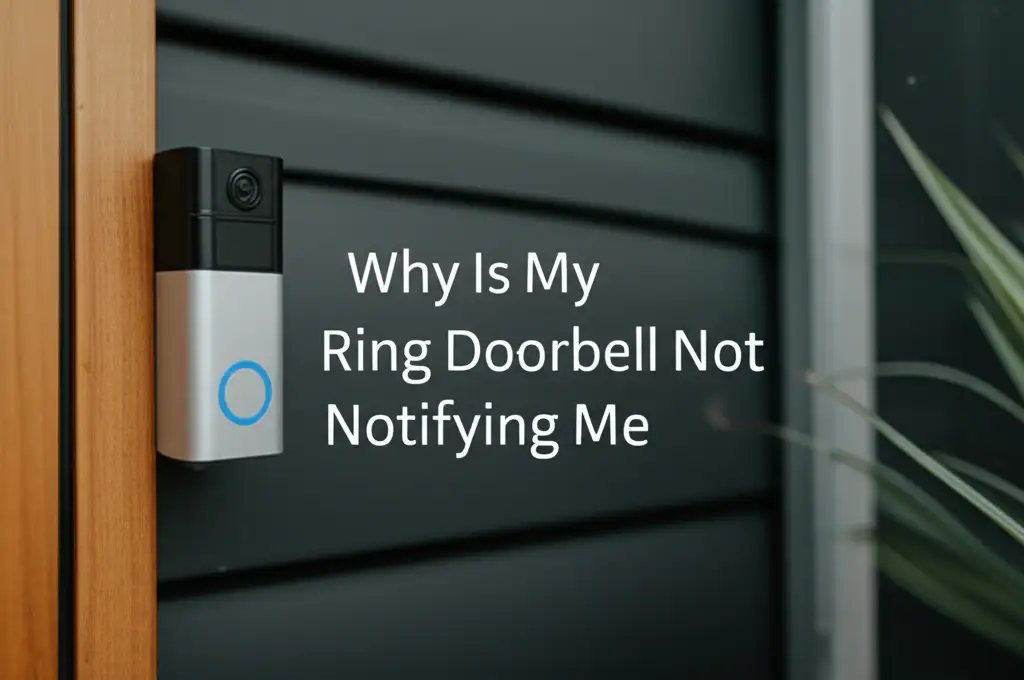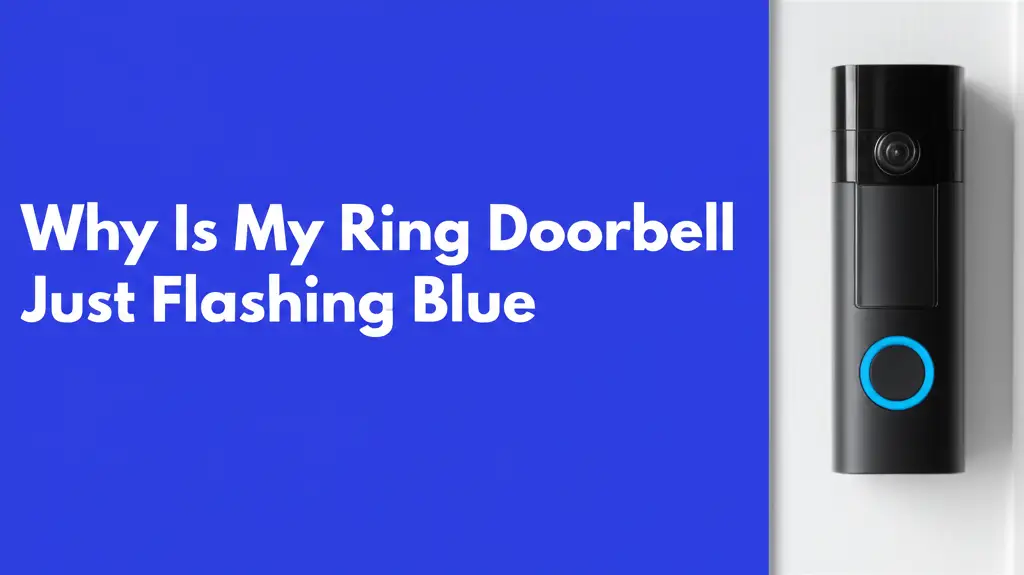· Katria Melrose · Smart Home Security · 20 min read
Can Ring Doorbell Footage Be Used In Court
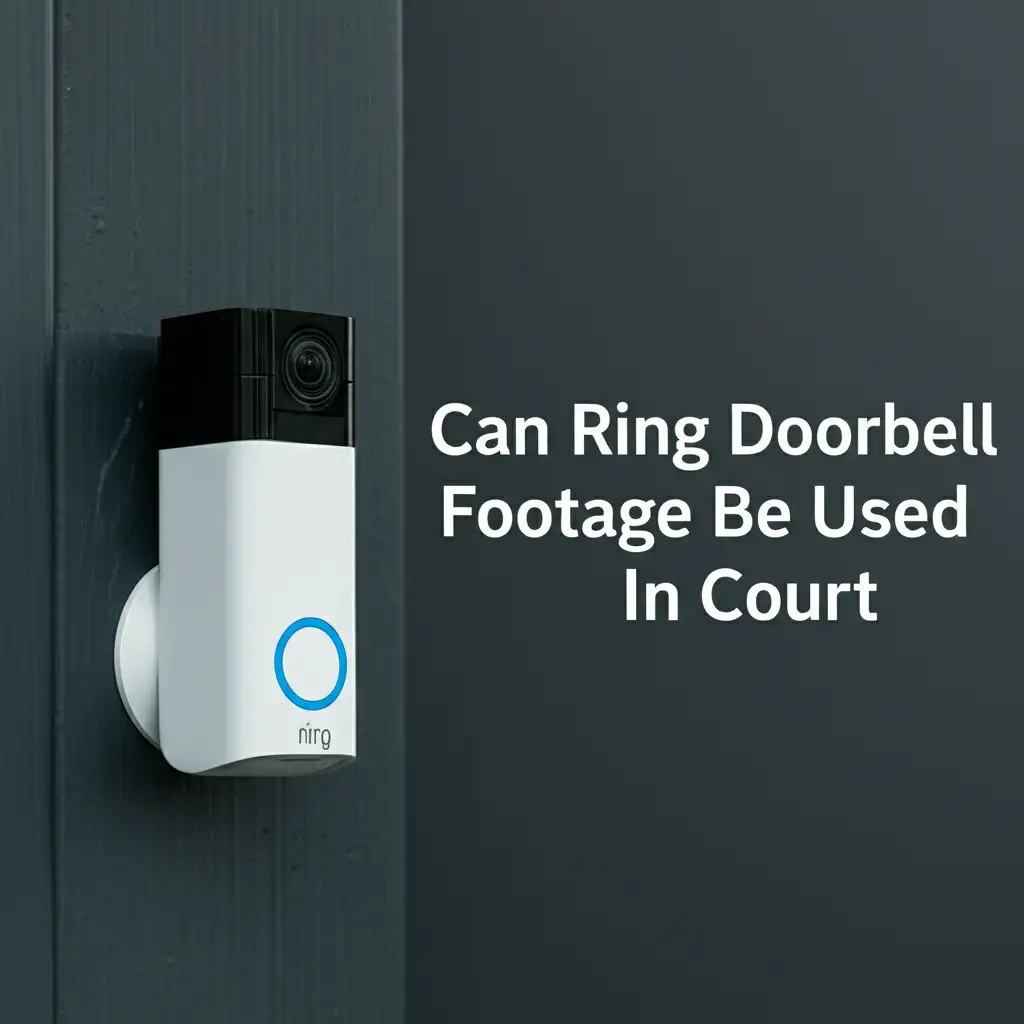
Can Ring Doorbell Footage Be Used In Court
Many homeowners rely on Ring doorbells for security. These devices capture motion and record video. This video often provides crucial evidence in various situations. People wonder if this footage holds up in a courtroom. I often hear questions about its legal standing. Today, we explore if Ring doorbell footage can be used in court. We will discuss its admissibility and any limitations. You will learn about privacy concerns and preparing footage for presentation. My aim is to give you a clear understanding of this important topic.
Takeaway
Using Ring doorbell footage in court requires careful steps. Here are key points:
- Footage must be relevant and authenticated.
- Privacy laws can affect its admissibility.
- Maintain a clear chain of custody.
- Seek legal advice early for the best outcome.
Yes, Ring doorbell footage can be used in court. Its admissibility depends on various legal rules. Courts consider factors like relevance, authenticity, and potential privacy violations. Proper presentation and adherence to evidence rules are crucial for its acceptance.
Understanding the Admissibility of Digital Evidence
Digital evidence has become a common part of legal cases. This includes videos, photos, and electronic communications. Courts increasingly accept digital media as evidence. However, it must meet specific criteria. The evidence must be relevant to the case. It also needs to be authentic. This means it truly represents what it claims to be.
Ring doorbell footage falls under digital evidence. It records events happening near your front door. This video can show crimes or accidents. It can also prove or disprove claims. Lawyers and judges often examine digital evidence closely. They look for any signs of tampering or manipulation.
The rules of evidence guide how courts handle all types of evidence. These rules vary slightly by jurisdiction. Generally, evidence must be reliable. A video that skips or has missing frames might raise questions. An attorney helps determine if your Ring footage meets these standards. They understand what judges look for.
The digital nature of Ring footage adds specific challenges. Data storage and retrieval methods are important. Cloud storage for Ring footage means it is not stored locally. This can affect how lawyers obtain it. The way you download or share the video matters for its integrity.
Key Factors Affecting Ring Footage in Court
Several factors determine if Ring doorbell footage is admissible in court. I know this can seem complex. Judges focus on three main areas: authenticity, relevance, and reliability. Let’s break these down.
Authenticity: This is paramount for any piece of evidence. The court needs to be sure the footage is original. It must not be altered or edited. Showing the full, unedited clip is usually best. You should also be ready to explain how you obtained the video. This includes details about your Ring device. You might need to confirm the date and time stamps. If your Ring doorbell has been hacked, the authenticity of the footage could be compromised. This could make the video unusable as evidence. How to tell if your Ring doorbell has been hacked might give you useful information about securing your device and ensuring the integrity of your recordings.
Relevance: The footage must directly relate to the case. It needs to prove a fact or make a fact more likely. For instance, a video of a package theft is highly relevant in a theft case. A video showing only daily mail delivery might not be relevant to a separate incident. The video should contribute to understanding the events. Irrelevant footage only wastes court time.
Reliability: This refers to the footage’s clarity and consistency. Is the video clear enough to identify people or actions? Is the audio understandable? Poor lighting or blurry images can reduce reliability. Intermittent recording or issues like your Ring doorbell going off on its own without apparent cause might also raise questions about its accuracy. A consistent recording history helps. The court also considers if the camera was working properly. Knowing how to know if your Ring doorbell is fully charged or if it functions if the power goes out speaks to the reliability of continuous recording.
Timestamps and Metadata: These digital footprints are vital. Timestamps show when the event occurred. Metadata can include device information and creation dates. This data helps verify the footage. It provides context and proves the video’s integrity. Ensure you preserve this information. Do not share the video in a way that strips this data.
Chain of Custody: This proves who had access to the footage from recording to presentation. A clear chain of custody shows the evidence has not been tampered with. We will discuss this more in a later section. It is a critical aspect for digital evidence.
Privacy Concerns and Legal Limitations of Ring Footage
Privacy is a significant legal aspect when using Ring doorbell footage. My clients often ask about recording neighbors. There are legal boundaries to consider. These boundaries protect individual rights. Understanding them is crucial for admissible evidence.
Expectation of Privacy: This concept is central to privacy law. People generally have an expectation of privacy in their homes. They do not have the same expectation in public spaces. Your Ring doorbell typically records public-facing areas. This includes sidewalks, streets, and your own property boundary. Recording these areas generally carries less privacy concern.
However, recording a neighbor’s private property without their consent can be problematic. This is especially true if your camera captures their backyard or windows. Such recordings might violate their reasonable expectation of privacy. This could lead to civil lawsuits or render your footage inadmissible. Some states have specific laws regarding audio recording. They may require two-party consent. This means everyone involved must agree to be recorded. Most Ring doorbells record audio by default. Be aware of these state-specific laws.
State and Local Laws: Privacy laws vary widely across states and even cities. Some states have “peeping tom” laws. These laws prevent recording people in private places without consent. Other states have stricter laws on surveillance. For example, some states limit recording audio in certain situations. Always check your local laws before using surveillance devices. What is permissible in one state may not be in another.
Fourth Amendment Considerations: The Fourth Amendment protects against unreasonable searches and seizures. This usually applies to government actions, like police searches. It generally does not apply to private citizens recording. However, if police request your footage, certain procedures might apply. They may need a warrant or probable cause depending on the circumstances. This is more about police action than your initial recording.
Public vs. Private Property: Distinguish between these clearly. Recording events on a public street is generally fine. Recording inside someone’s home, even inadvertently, is not. Your Ring doorbell should point towards public access areas. Adjust the camera angle to avoid capturing private spaces. Many Ring devices allow you to set privacy zones. Use these features to black out portions of the video feed. This helps avoid capturing sensitive areas.
The Chain of Custody for Ring Doorbell Video
Establishing a solid chain of custody for digital evidence like Ring doorbell footage is extremely important. It proves the evidence’s integrity. It shows the video has not been altered or tampered with. Without a clear chain, a judge might question the footage’s reliability.
What is Chain of Custody? It is a documented process. It tracks who has had possession of the evidence. It starts from when the footage was recorded. It ends when it is presented in court. Every transfer of the footage must be recorded. This includes dates, times, and names of individuals involved.
Steps to Maintain Chain of Custody:
- Original Capture: The Ring doorbell automatically records and uploads to the cloud. This initial capture is generally secure. The timestamp and metadata are recorded by Ring’s servers.
- Downloading Footage: When you download the footage, use the official Ring app or website. Do not use third-party tools. Download the highest quality version available. Store it in a secure location.
- Preservation: Save the original downloaded file. Make copies for viewing or analysis. Always work with copies, never the original. This ensures the original file remains untouched.
- Documentation: Keep a log of all actions taken with the footage.
- Date and Time of Download: Note when you first accessed and saved the file.
- Storage Location: Document where you saved the footage (e.g., external hard drive, cloud storage).
- Copies Made: List any copies you created.
- Transfers: Record every time you share the footage. Include who you shared it with and when. For example, if you send it to your lawyer, note the date and time.
- Access Control: Limit who can access the original file. Store it on a password-protected device or secure cloud storage. This prevents unauthorized alteration.
- Expert Analysis (if needed): If an expert analyzes the footage, ensure they follow strict protocols. They must document their process. Their findings should corroborate the footage’s authenticity.
Why is it Critical? Opposing lawyers will try to discredit your evidence. They might argue the footage was edited or faked. A strong chain of custody counters these claims. It shows the court you took every step to preserve the video’s integrity. This increases the likelihood that your Ring doorbell footage will be accepted as legitimate evidence.
Different Case Types: Criminal vs. Civil Uses
Ring doorbell footage can serve as valuable evidence in various legal cases. The type of case often influences how the footage is used. It also affects the legal standards for its admissibility. I have seen it used in both criminal and civil matters.
Criminal Cases:
- Purpose: In criminal cases, the state or government prosecutes individuals for breaking laws. Ring footage often helps identify suspects. It can prove someone’s presence at a crime scene. It might also show the commission of an offense.
- Examples:
- Theft: A Ring camera might capture someone stealing a package. This footage identifies the thief. It also shows the act of theft itself.
- Assault: Video could show an assault occurring on your property. This provides direct evidence of the crime.
- Burglary: Footage might show someone attempting to break into your home. This supports charges of attempted burglary.
- Admissibility: In criminal cases, the burden of proof is high (“beyond a reasonable doubt”). The footage must be very clear. Its chain of custody must be impeccable. Privacy concerns, especially regarding police acquisition of footage, often become significant. Police may need a warrant to compel you to hand over footage, depending on the circumstances.
- Impact: This type of evidence can be powerful. It offers an objective view of events. Jurors can see what happened with their own eyes. It can corroborate witness testimony or even contradict false statements.
Civil Cases:
- Purpose: Civil cases involve disputes between individuals or organizations. They seek to resolve disagreements or gain compensation for damages. Ring footage can help establish liability or prove negligence.
- Examples:
- Personal Injury: If someone slips and falls on your property, your Ring camera might show the conditions. It could reveal if the hazard was visible. It could also show if the person was distracted.
- Property Damage: A neighbor’s child might accidentally break your window. The Ring video could capture this event. It identifies who caused the damage.
- Boundary Disputes: Rarely, footage could offer context for property line issues. It might show where a fence was located historically.
- Admissibility: The burden of proof in civil cases is lower (“preponderance of the evidence”). This means it’s more likely than not. While still requiring authenticity and relevance, the standards might be slightly less strict than in criminal cases. Parties can also use footage during discovery. This is the process where each side gathers information from the other.
- Impact: In civil cases, Ring footage can strengthen a claim for damages. It can also defend against an accusation. It offers visual proof to support arguments in mediation or trial. It helps insurance companies assess claims too.
In both types of cases, the footage is a tool. It supports a larger narrative. Legal professionals guide its use. They ensure it fits within the specific rules of the court.
Preparing Ring Footage for Legal Presentation
Once you have relevant Ring doorbell footage, preparing it for court is crucial. Simply handing over a raw video file is often not enough. Proper preparation increases its chance of acceptance and effectiveness. I always advise clients to follow these steps carefully.
1. Secure and Preserve the Original Footage:
- Do Not Edit: Never trim, crop, or alter the original video file. Any modification can raise questions about authenticity. Courts prefer the original, unedited version.
- Download Safely: Download the footage from your Ring app or account. Use the highest quality setting available. This preserves details.
- Backup: Save the original downloaded file to multiple secure locations. Use an external hard drive and cloud storage. This protects against loss or corruption.
2. Create Working Copies:
- For Review and Analysis: Make copies of the original file for viewing. You and your legal team can review these copies. You can identify key moments.
- Annotation: If needed, an expert can create an annotated version. This might highlight specific frames or add text overlays. This version would be a demonstrative exhibit, not the actual evidence.
3. Transcribe Relevant Audio (If Applicable):
- Accuracy: If the audio is important, have it transcribed. A professional transcription service ensures accuracy. This makes the audio easily reviewable for the judge and jury.
- Identify Speakers: If possible, identify who is speaking in the transcription. This adds clarity.
4. Compile Key Information (Metadata):
- Device Details: Note the Ring device model number. Include its installation date.
- Location: Specify the exact location of the doorbell. This means the address and where on the property it is mounted.
- Time and Date: Verify that the timestamp on the footage is accurate. Note any time zone differences.
- Ring Account Information: Provide details about the account linked to the device. This helps establish ownership and control.
5. Consider Expert Testimony:
- Authentication: For complex cases, an expert witness might be necessary. They can testify to the footage’s authenticity. They can explain how the video system works.
- Analysis: Digital forensics experts can analyze the footage. They can enhance clarity or confirm its integrity. This adds credibility to your evidence.
6. Organize for Presentation:
- Exhibits: Work with your lawyer to label the footage as a court exhibit. They will follow specific legal procedures for this.
- Clarity: Ensure the video is presented clearly in court. This might involve using a large screen or providing individual copies.
- Specific Clips: You might only need to show specific segments of a long video. Your lawyer will select these relevant portions. However, always have the full original available.
7. Consult with Your Attorney:
- Legal Strategy: Your attorney will guide you. They know the specific rules of evidence in your jurisdiction. They will advise on the best way to present the footage.
- Discovery: Be prepared to share the footage during the discovery phase. This is when opposing parties exchange information.
By following these steps, you enhance the professionalism and credibility of your Ring doorbell footage. This significantly increases its chances of being effectively used in court.
Navigating Potential Challenges with Ring Evidence
While Ring doorbell footage can be powerful, its use in court is not always straightforward. Several challenges can arise. I make sure my clients are aware of these potential hurdles. This helps us prepare a stronger case.
1. Hearsay Objections:
- The Issue: Hearsay is an out-of-court statement offered in court to prove the truth of the matter asserted. While video itself is not hearsay, any audio dialogue captured can be.
- Solution: Your lawyer will argue an exception to the hearsay rule. For example, if the statement is an “excited utterance” or identifies a speaker, it might be admissible. Focus on the visual evidence if the audio is problematic.
2. Authenticity Challenges:
- The Issue: Opposing counsel might claim the footage has been altered. They could suggest it’s not the original recording. They might question the chain of custody.
- Solution: Strong chain of custody documentation is your best defense. Present the original file. Be ready to explain how you downloaded and stored the video. Expert testimony from a digital forensics specialist can further confirm authenticity if needed.
3. Relevance Objections:
- The Issue: The footage might be deemed irrelevant to the facts of the case. It might not directly prove or disprove a central point.
- Solution: Your attorney must clearly explain how the video connects to the legal arguments. They will demonstrate its probative value. Make sure the segment you present focuses only on the relevant events.
4. Prejudice vs. Probative Value:
- The Issue: Even if relevant, a judge might exclude footage if its prejudicial effect outweighs its probative value. This means the video might evoke strong emotions or distract the jury without truly adding to the facts. For example, overly graphic content.
- Solution: Your lawyer will argue that the footage is necessary for understanding the events. They will emphasize its factual accuracy over any emotional impact. Sometimes, editing a longer video to show only the essential parts can mitigate this. Remember, “editing” here means selecting relevant segments of an original, unedited full video.
5. Privacy Concerns:
- The Issue: If the footage captures private areas or individuals without consent, it might be inadmissible. This is especially true if state laws are strict.
- Solution: Demonstrate that your Ring camera captures only public-facing areas. Show how you used privacy zones. Argue that individuals had no reasonable expectation of privacy in the recorded location. Legal guidance on specific state laws is critical here.
6. Technical Limitations:
- The Issue: Poor video quality (blurry, dark), audio distortion, or incomplete recordings can challenge admissibility. If the camera failed to record due to power outages or battery issues, the evidence might be partial or non-existent.
- Solution: Acknowledge limitations. Focus on what can be clearly seen or heard. Supplement with other evidence. For example, witness testimony can support what the video shows. An expert might clarify difficult-to-see elements if possible.
7. Data Storage and Retention:
- The Issue: Ring’s cloud storage policies mean older footage may be automatically deleted. If you don’t save it promptly, it could be lost.
- Solution: Download and save any potentially relevant footage as soon as possible. Do not rely on Ring’s cloud for long-term storage of critical evidence. Understand Ring’s subscription plans and retention periods.
Anticipating these challenges helps you and your legal team build a robust case. It allows you to prepare counter-arguments and strengthen the presentation of your Ring doorbell footage as evidence.
Legal Consultation: Your Next Steps
After understanding the various aspects of using Ring doorbell footage in court, your next step is clear. You should consult with a legal professional. I always recommend this. A lawyer’s expertise is invaluable. They can help you navigate the specific legal landscape.
Why a Legal Professional?
- Case Assessment: An attorney can review your footage. They can assess its potential impact on your specific case. They will tell you if the footage is truly relevant and strong.
- Jurisdiction-Specific Knowledge: Laws vary significantly from state to state. Your lawyer understands the specific rules of evidence in your local court. They know the privacy laws that apply to your situation.
- Admissibility Analysis: They determine if your footage meets the strict criteria for admissibility. They can anticipate and counter objections from the opposing side.
- Evidence Collection Protocol: A lawyer will guide you on the proper collection and preservation methods. This ensures a solid chain of custody. This helps prevent challenges to authenticity.
- Strategy Development: Your attorney integrates the Ring footage into your overall legal strategy. They know how to present it most effectively. This might include pairing it with witness testimony or other evidence.
- Negotiation and Settlement: Even if a case does not go to trial, strong video evidence can be a powerful tool. It strengthens your position in negotiations. It can lead to a more favorable settlement.
- Court Representation: If the case proceeds to trial, your lawyer will present the evidence on your behalf. They handle all court procedures. They question witnesses and make legal arguments.
What to Bring to Your Consultation:
- The Footage: Bring the original downloaded file of your Ring doorbell video. Have any copies you made ready.
- Ring Account Information: This includes your device model and account details.
- Case Details: Provide all relevant information about your situation. This means dates, times, people involved, and any related documents.
- Any Other Evidence: Bring police reports, witness statements, or photos. This gives your lawyer a full picture.
Seeking legal advice early can make a significant difference. It helps avoid costly mistakes. It maximizes the chances of your Ring doorbell footage being successfully used in court. Do not try to navigate this complex legal process alone.
FAQ Section
Q1: Can Ring footage be edited for court? No, you should never edit the original Ring doorbell footage. Any alterations can make the evidence inadmissible. Courts require the original, unedited file to ensure authenticity. You can create copies for review. Your lawyer might use specific segments from the original. However, the full, raw video must always be available.
Q2: How long does Ring store footage? Ring’s storage duration depends on your subscription plan. Without a plan, Ring does not save video. With a Ring Protect Basic plan, footage is stored for up to 60 days in the U.S. and 30 days internationally. Ring Protect Plus and Pro plans offer the same duration. Always download important footage promptly.
Q3: Is Ring doorbell footage public record? No, Ring doorbell footage is not public record. It is private property belonging to the account holder. Law enforcement cannot access it without your consent or a legal warrant. You control who views and accesses your recordings. Ring has strict privacy policies for user data.
Q4: Can police get my Ring doorbell footage? Police can request your Ring doorbell footage. They typically ask users to voluntarily provide it. If you refuse, they may need a warrant or a court order to compel you to hand it over. Ring states they will not provide user footage to law enforcement without a valid legal demand or the user’s explicit consent.
Q5: What if my Ring doorbell recorded audio without consent? Audio recording laws vary by state. Some states are “one-party consent” (only one person needs to know they are being recorded). Others are “two-party consent” (all parties must consent). If your Ring recorded audio in a two-party consent state without consent, the audio portion might be inadmissible. The video might still be used.
Q6: What if my Ring doorbell footage is blurry? Blurry footage can still be admissible if it’s relevant and can be authenticated. However, its probative value might be reduced. A judge will weigh its clarity against what it helps prove. An expert might be able to enhance the video. Your attorney will help decide if it’s worth presenting.
Conclusion
Using Ring doorbell footage in court is definitely possible. It serves as powerful visual evidence in both criminal and civil cases. However, simply having the footage is not enough. You must understand the legal requirements. Key factors include the footage’s authenticity, relevance, and reliability. Privacy laws and maintaining a clear chain of custody are also critical.
I have found that proper preparation makes a significant difference. This involves securing the original file, documenting its handling, and potentially involving legal and technical experts. While challenges like hearsay or technical limitations exist, an experienced attorney can help navigate these hurdles. If you believe your Ring doorbell footage can be used in court, do not hesitate to contact a legal professional. They will guide you through the process. They will ensure your evidence is presented effectively. Your security system can become a vital tool in seeking justice or defending your rights.
- Ring doorbell
- video evidence
- legal admissibility
- smart home security
- court proceedings
- surveillance footage


